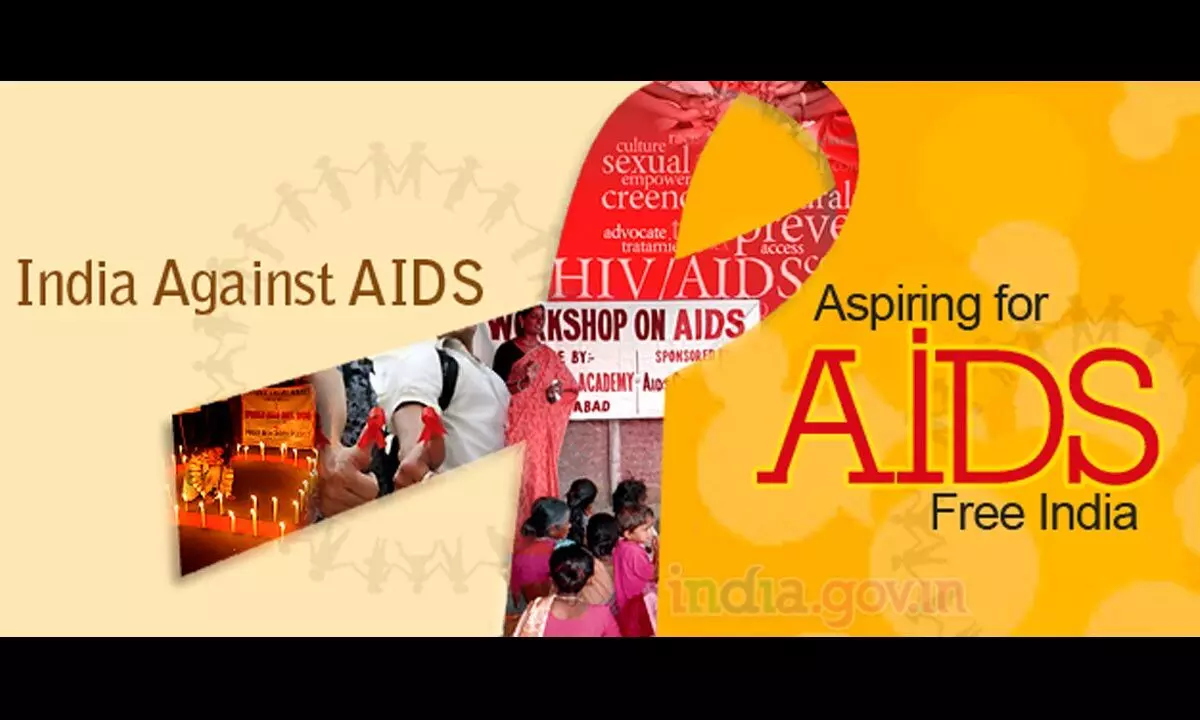People living with HIV need to be energized, equalized and empathized
Around 20% of Indians with HIV are unaware of their HIV status
image for illustrative purpose

If we eliminate the vertical transmission (from mother to child), we will eliminate paediatric HIV in our country. But it is no easy task. Hidden among the 27 million women, who get pregnant every year in India, there are about 27500 women who are HIV positive. These women have to be traced, diagnosed and put on treatment to reduce the risk of transmission to the baby born to them to less than one per cent from the current 45%
The 14th national conference of AIDS Society of India (ASICON) held recently in New Delhi under the theme ‘Energize, Empathize, Equalize’ has been a real eye-opener. The conference covered a variety of topics related to HIV and other emerging infectious diseases.
the theme holds significance as even though the Parliament, way back in 2017, had passed the HIV and AIDS (Prevention and Control) Bill, which was primarily aimed at ensuring equal rights while seeking treatment, education and job by people living with HIV, HIV-related discrimination still persists in the society.
As of today, only 15 states have made some progress towards appointing an Ombudsman, which is a mandatory provision in the Act. The country is yet to see a single prosecution under the provisions of this Act and it in no way connotes that violations have not happened.
For example, People Living with HIV (PLHIV) are denied mediclaim policies, as such policies still mention HIV in the exclusion criteria. Life insurances still prevent people living with HIV from taking policies for an insured sum more than Rs 10 lakh and claims are not settled. Insurance Regulatory and Development Authority of India (IRDAI), after persuasion from the AIDS Society of India, recently warned insurance agencies against such discriminations. But the fact remains that such discrimination against HIV people is still prevalent in all walks of life. India needs to end this HIV-related discrimination by implementing the HIV/AIDS (Prevention and Control) Act 2017 with an iron hand.
During the conference, a book ‘The Blunting of an Epidemic: A Courageous War on AIDS’ authored by Jayashree Shetty and Gopal Shetty was released by Dr Anoop Kumar Puri, Deputy Director General (DDG) of National AIDS Control Organization (NACO), UNAIDS India head Dr Bridger, and WHO regional head of infectious diseases Dr PoLin Chan. It chronicles 37 years of fierce and relentless journey of Dr Ishwar Gilada, who had established the country’s first HIV clinic in the government-run JJ Hospital in Mumbai when the first case was diagnosed in the country. According to WHO Global TB Report, over 54000 people living with HIV in India also developed active TB disease in 2021, out of which 11,000 died.
The conference drove home the point that no one should die of HIV or TB. More importantly, the country has scientifically proven tools and approaches to prevent, treat and manage TB in people living with HIV.
It is a sad irony that many of those who die from HIV-related TB are the most vulnerable populations who are deprived of timely health services, including addressing comorbidities like under-nutrition, mental health disorders and substance use disorders.
In the meanwhile, that India has made commendable progress since the World Health Day of April 7, 2004 when it began the rollout of lifesaving antiretroviral therapy (ART) for people living with HIV. But formidable challenges remain. According to the National AIDS Control Organization 2022 report, new HIV infections and AIDS-related deaths are declining every year. Between 2010 and 2021, new infections declined by 46% and AIDS-related mortality declined by 76%. The goal to reduce new HIV infections by 2025 is 80% and clearly, we need to do much more to turn the tide.
But it is sad that even after 40 years into the epidemic, more than 20% of people with HIV still do not know their HIV status. We will have to use innovative approaches to close this gap. And one of these approaches is by self-testing for HIV people, who perceive themselves at risk of infection, are given the opportunity to self-test for the infection so that they can test in the privacy of their homes. There is an urgent need to develop a strategic framework for HIV SelfTest (HIVST) to make self-testing for HIV an integral part of HIV services. Prevention of mother to child transmission is another important gap. We know that 90% of children below 15, who are HIV positive, got the infection through vertical transmission (from mother to child). If we eliminate this vertical transmission, we will eliminate paediatric HIV in our country. But it is no easy task. Hidden among the 27 million women who get pregnant every year in India, there are about 27500 women who are HIV positive. These women have to be traced, diagnosed and put on treatment to reduce the risk of transmission to the baby born to them to less than one per cent from the current 45%.
All nations globally have promised to end AIDS by 2030 as part of the UN Sustainable Development Goals (SDGs). For the country to achieve this target we have to first end the discrimination against persons with HIV and AIDS.
The HIV and AIDS (Prevention and Control) Act was framed primarily to prohibit discrimination against persons with HIV and AIDS. In the context ASICON’s call for ‘energize, empathize, equalize’ is relevant and of foremost importance in combating the illness.
(The author is freelance journalist with varied experience in different fields)

